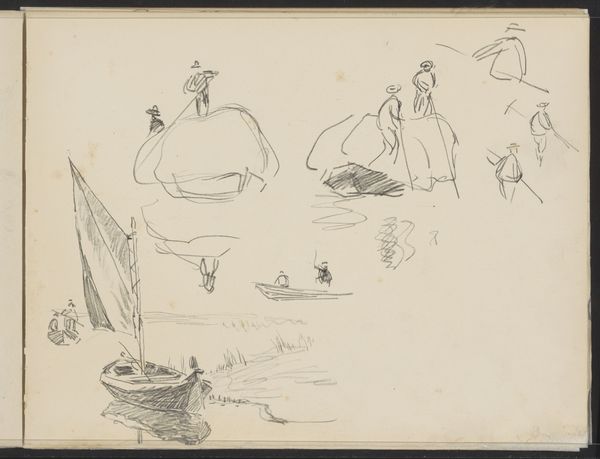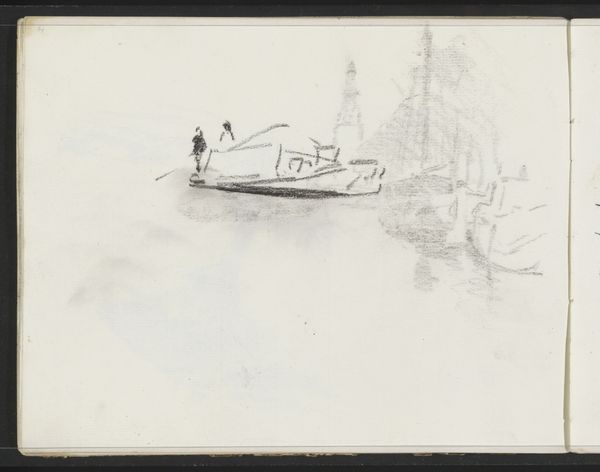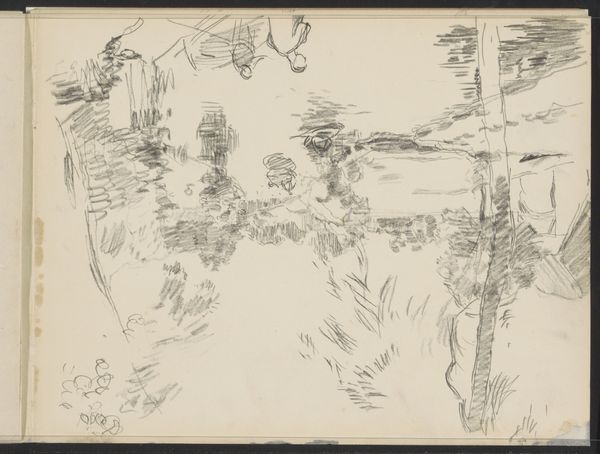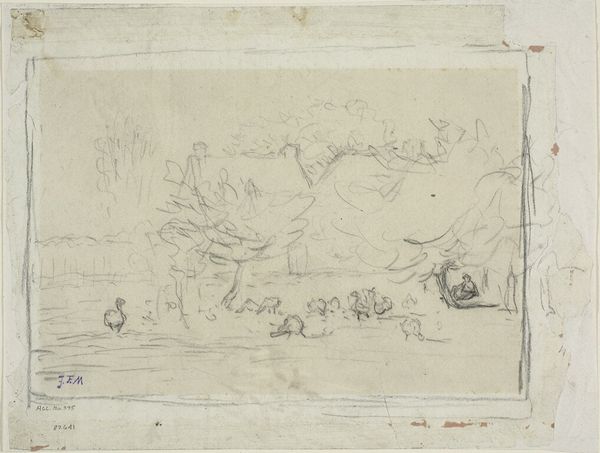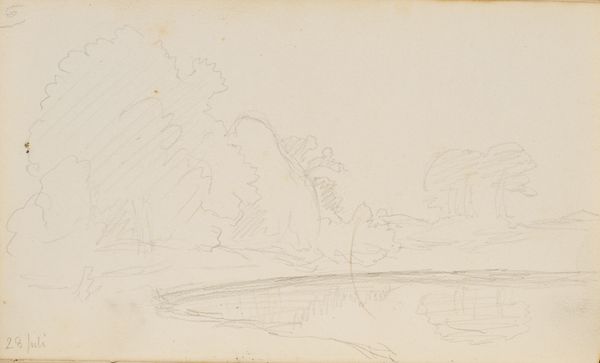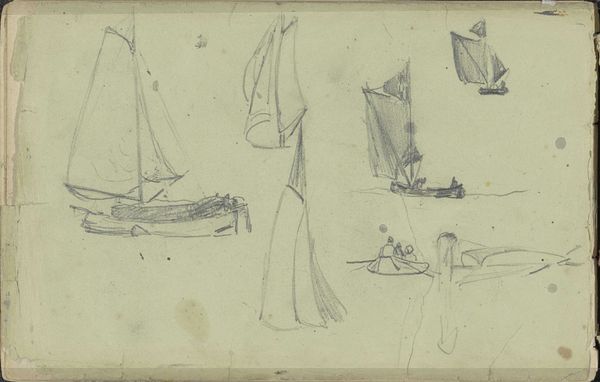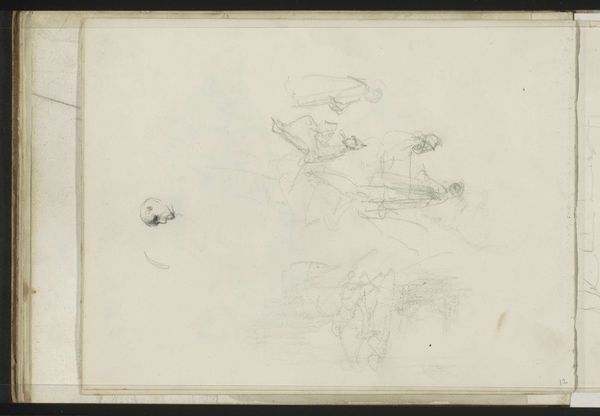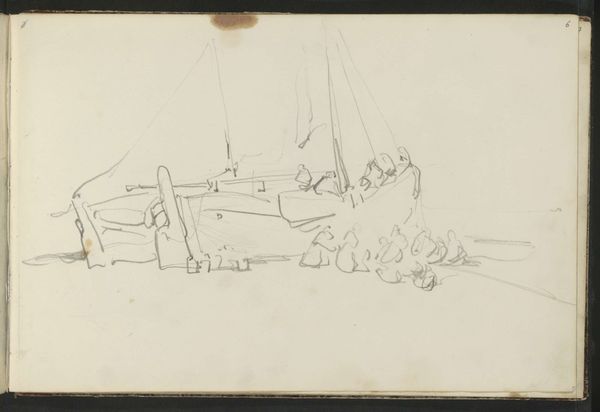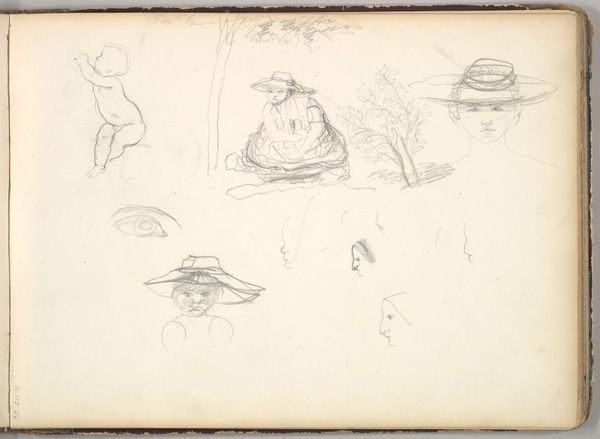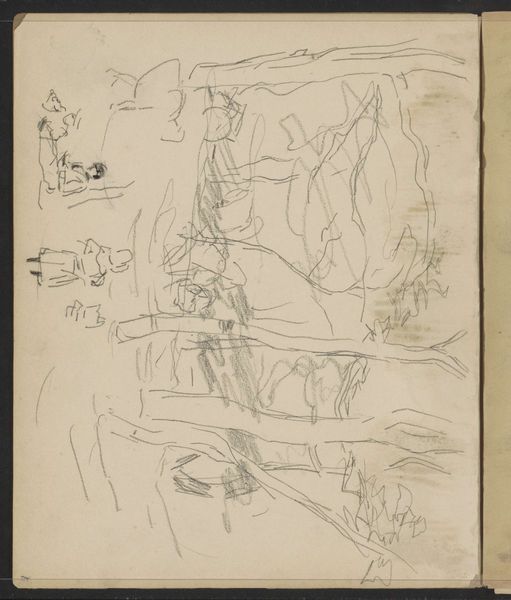
Figuurstudies en landschappen met een molen en aangemeerde roeiboot 1870 - 1931
0:00
0:00
willembastiaantholen
Rijksmuseum
drawing, pencil
#
drawing
#
ink drawing
#
quirky sketch
#
pen sketch
#
landscape
#
personal sketchbook
#
sketchwork
#
ink drawing experimentation
#
pen-ink sketch
#
pencil
#
sketchbook drawing
#
storyboard and sketchbook work
#
sketchbook art
Copyright: Rijks Museum: Open Domain
Willem Bastiaan Tholen sketched these figure studies and landscapes, including a windmill and rowboat, in graphite on paper. The windmill, a powerful emblem of industriousness and human ingenuity, stands prominently. The windmill motif has carried great significance across cultures. Consider Don Quixote tilting at windmills, mistaking them for giants - a symbol of misguided idealism. Yet, in the Netherlands, windmills were a symbol of progress and control over nature, a sense of order and purpose in the landscape. This symbol, deeply rooted in the collective consciousness, resurfaces in various forms, embodying different facets of the human experience. Like the ever-changing wind that powers the sails, its cultural meaning morphs and adapts. It touches on both our conscious appreciation of progress and our subconscious fear of the unknown.
Comments
No comments
Be the first to comment and join the conversation on the ultimate creative platform.
